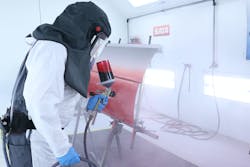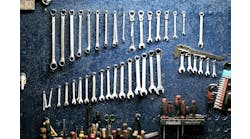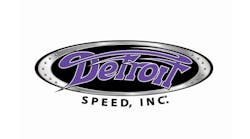To say that 2020 has been an uncertain year, would be an understatement. The effects of the COVID-19 virus have altered everyone’s reality immensely, including the world of paint.
In a business where technology and trends are already moving quickly, the virus has forced the adapting industry to push even harder to tackle top challenges.
FenderBender sat down with Tony Larimer, director of sales and marketing at Dan-Am Company, to discuss some of the newest challenges facing the industry, including the COVID-19 pandemic, how to continue to move forward, and what’s on the horizon.
On a technical side, what do you think is the biggest challenge currently facing the industry?
Challenging colors is a big one, and has really changed over time. Every car manufacturer sets itself apart from its competitors with color, and some of the pigments that are used are extremely expensive and may have fairly short pot life. Matching newer colors can be really difficult.
These colors also present a challenge with insurance companies, who can have trouble understanding why certain colors cost more than another similar color might. It’s a challenge, as well, to get paid for the extra labor.
Dealing with waterborne, in general, has been another obstacle. Most paint companies have very successful waterbornes, and shops may have had to change how they go about spraying water to get a cleaner area with which to spray.
The manufacturers of paint booths, and lights, and our air flow equipment has accelerated trying to help keep up with the products that are being used.
Where do you see the paint industry moving in the next few years?
We’re seeing a lot more UV products. These have been around a while, but when waterborne became big, it kind of put UV on a back-burner. Now, people are looking for other ways to be more efficient, whether it be large MSOs or just individuals, and are moving toward UV.
UV technology right now has been primarily in primers, but we’re also starting to see it in clear coats as well. Traditionally, priming is easier to do because, most times, you’re not priming a whole car; you’re priming sections or small spots.
We’re seeing lights now, in the UV technology, where you put on one coat, wait about three to eight seconds, hit it with a UV light and it cures it in 30 seconds. And there is no heat, so the panel is not warm, and you can immediately sand it.
How do you believe COVID-19 has affected the industry?
It’s caused a huge amount of trauma, starting from the ground up. Paint shops are changing the way they do things—never before did they worry about cleaning the car so much before they got in. There has been a lot of talk on how to fumigate and clean everything enough so they can handle those parts without getting anything on themselves.
People who have small damages on their cars may just choose to drive them now, because maybe they were laid off from their job and they don’t have the extra money to pay the deductible. So, they are just choosing to drive it with the damage. Our hope is that they don’t leave it that way forever and that they get it fixed at some point.
It has definitely done some income damage at the shop level. We have painters that are used to turning 130, 140 hours in a week. All of sudden, when there is only 40 hours of work per week coming into the shop, you have to take how many people you have working and divide that up.
Many distributors are closed and not allowing walkins. Their sales team is working from home. A lot of people are also getting laid off.
How can the industry continue to move forward?
Since training is so vital for new products, in order to get certified to work with different OEM procedures, all that training is moving remotely through video. OEMs are looking to a variety of companies for support, help, and a way to get OEM procedures out to the market.
SATA has been using social media, doing how-to videos, and we’ve done quite a few Zoom meetings. People are trying to keep their painters employed, so all of a sudden their shop is as clean as it’s ever been. Now they are looking at their spray equipment thinking, “Wow, I have a little time here, maybe I should clean this while I remain open.”
So we’re doing videos on how to properly maintain their equipment for the first time, maybe ever. We’re trying to take our time and spend it wisely.
Sponsored by




